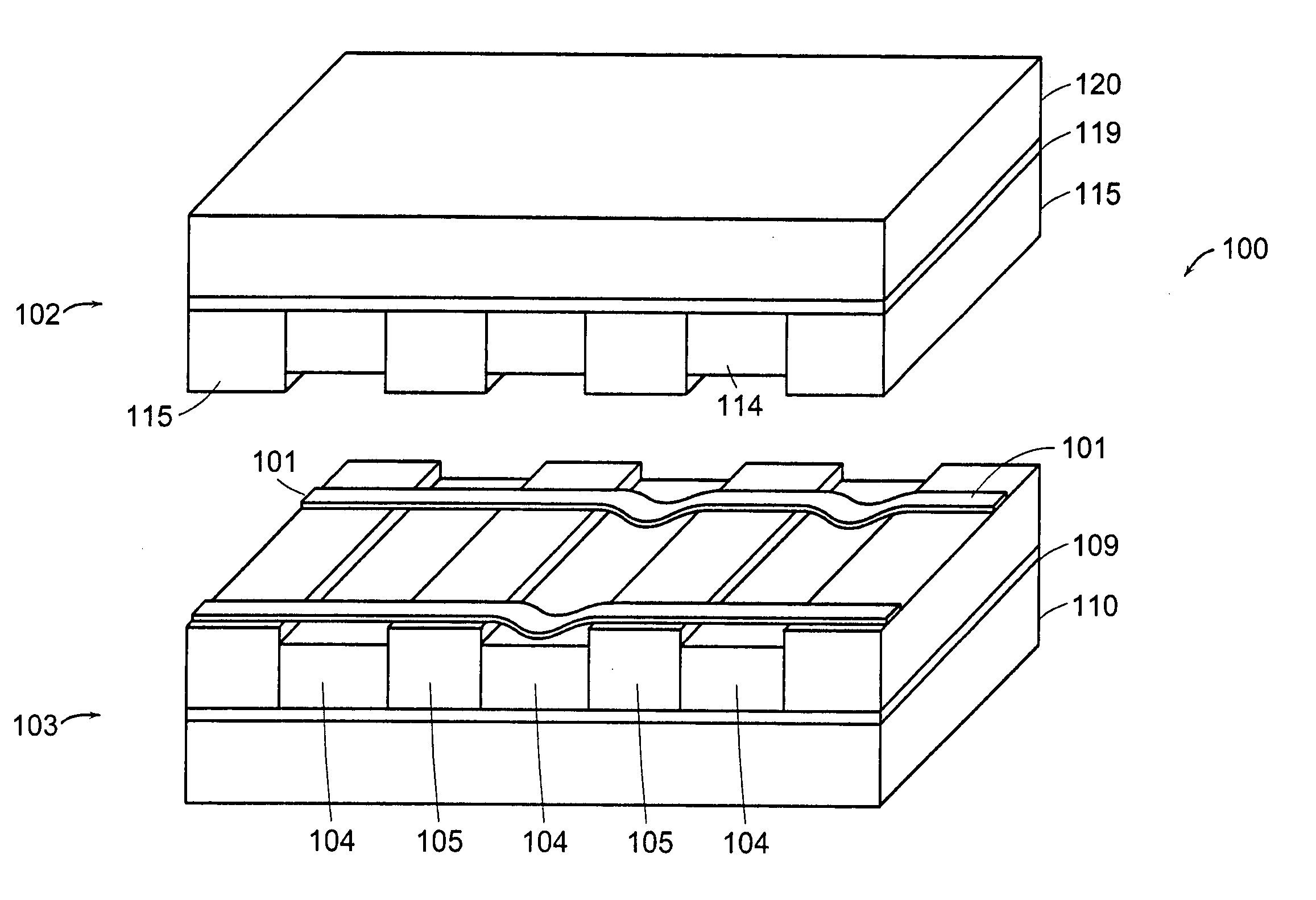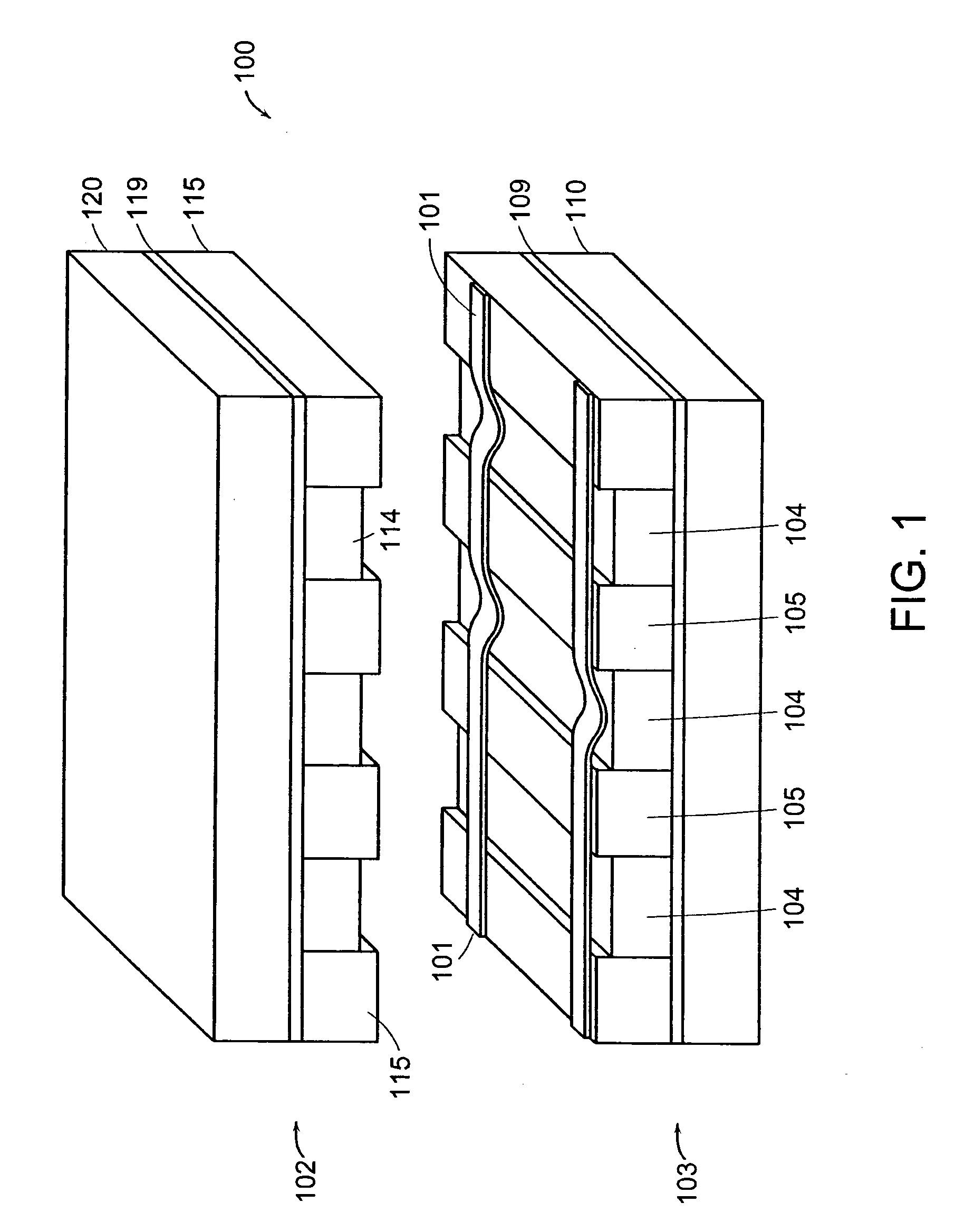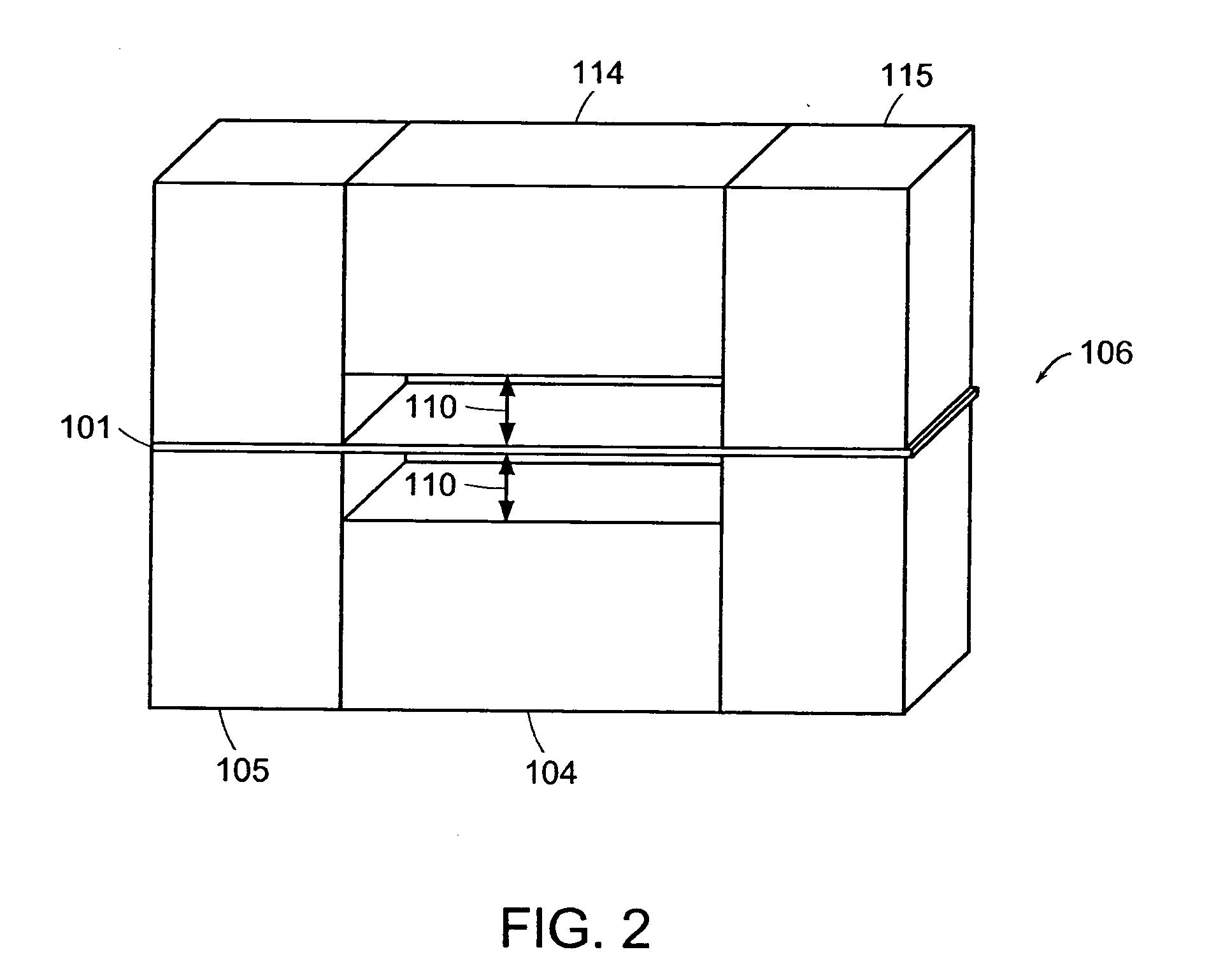Methods of making electromechanical three-trace junction devices
- Summary
- Abstract
- Description
- Claims
- Application Information
AI Technical Summary
Problems solved by technology
Method used
Image
Examples
Embodiment Construction
[0032] Preferred embodiments of the invention provide new electromechanical circuit elements and methods of making the same. In particular, three trace nanotube-technology devices are shown and methods of making same are described. As will be explained below, the use of three traces (1) facilitates tristable logic that may achieve higher memory storage and / or information densities, (2) improves reliability and speed of switching a given element or cell, and (3) improves fault tolerance of an element or cell. Moreover, certain embodiments effectively enclose the three-trace junctions, facilitating their use, fabrication, and distribution, especially in the case of hybrid circuits.
[0033] In short, preferred embodiments of the present invention include electromechanical circuit junctions formed from at least three crossing junctions, only one of which needs to be an electromechanically responsive trace. Though the electromechanically responsive trace may be formed from a carbon nanotu...
PUM
 Login to View More
Login to View More Abstract
Description
Claims
Application Information
 Login to View More
Login to View More - R&D
- Intellectual Property
- Life Sciences
- Materials
- Tech Scout
- Unparalleled Data Quality
- Higher Quality Content
- 60% Fewer Hallucinations
Browse by: Latest US Patents, China's latest patents, Technical Efficacy Thesaurus, Application Domain, Technology Topic, Popular Technical Reports.
© 2025 PatSnap. All rights reserved.Legal|Privacy policy|Modern Slavery Act Transparency Statement|Sitemap|About US| Contact US: help@patsnap.com



